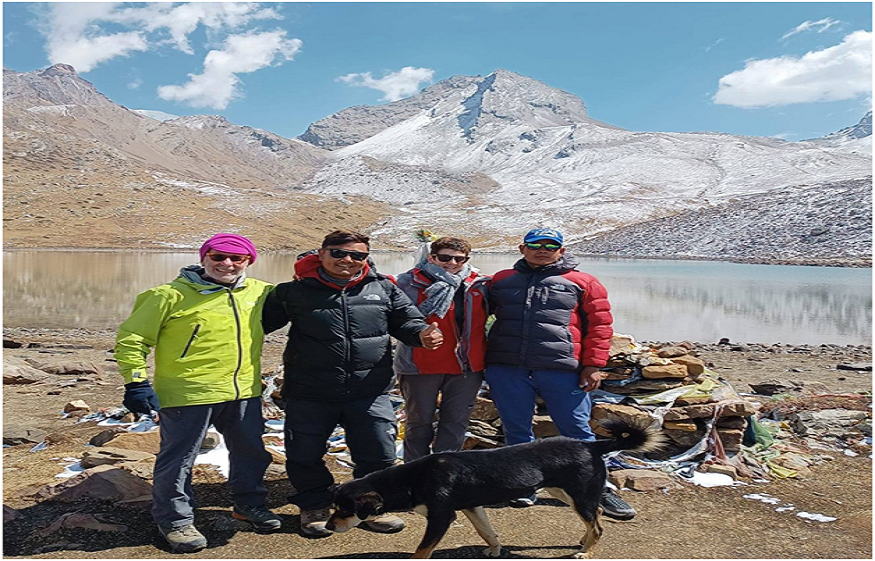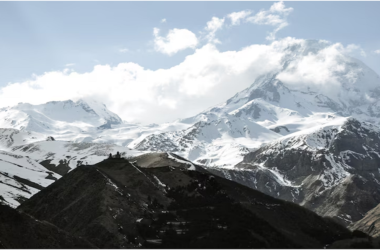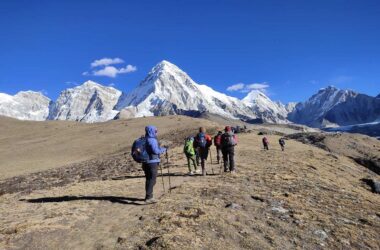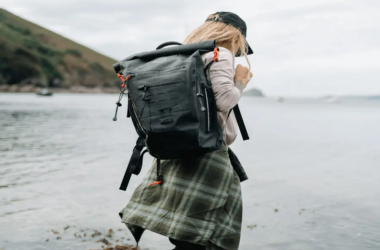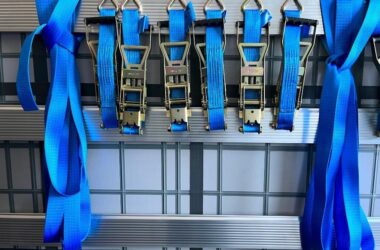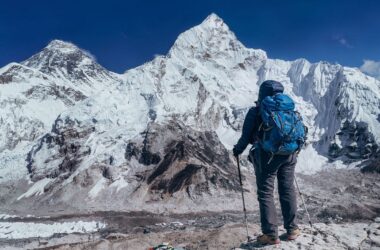A trek Past Peaks
Nepal, the arrival of taking off summits and sacrosanct scenes, offers distant more than mountain vistas—it offers soul-stirring ventures through antiquated societies, inaccessible valleys, and Himalayan most profound sense of being. For those looking for more than the standard Everest course, Nepal’s lesser-traveled ways divulge the exceptional soul of the Himalayas.
In this investigation, we navigate four of Nepal’s most effective trekking encounters: the delicate excellence of the 5-day Langtang Valley trek, the old disconnection of the Nar Phu Valley, the otherworldly wild of the Manaslu Circuit, and the ageless differing qualities of the Annapurna Circuit. These trails are not fair physical routes—they are a reflective way through stories, scenes, and lives established in centuries of Himalayan tradition.
Langtang Valley trek (5 Days):
A Brief but Lovely Escape
Just a day’s drive from Kathmandu, the Langtang Valley trek culminates for those brief on time but yearning for a veritable Himalayan experience. In five days, this trek conveys glacier-fed waterways, profound pine timberlands, sprouting rhododendrons, and open snow capped landscapes.
Trail Overview
Starting from Syabrubesi, the path climbs consistently through charming Tamang towns and bamboo forests. The trip takes after the Langtang Khola stream and leads to Kyanjin Gompa, a quiet town encompassed by frigid peaks. Discretionary day climbs to Tserko Ri give a fantastic finale with all encompassing views of Langtang Lirung and adjacent glaciers.
Culture and Community
The Langtang Region is home to the Tamang individuals, whose culture is profoundly impacted by Tibetan Buddhism. You’ll pass chortens, supplication wheels, and main dividers along the path. After the 2015 seismic tremor, the neighborhood communities have revamped with strength, advertising warm neighborliness and revitalized trails.
Nar Phu Valley trek:
Into the Misplaced Valleys
Hidden between the Annapurna and Manaslu Region s, the Nar and Phu valley trek remained fixed off from the world until 2003. These valleys are among Nepal’s most untouched scenes, both socially and geographically.
What to Expect
Starting from Koto, trekkers take off the Annapurna course behind and enter a profound pig out flanked by cliffs and waterfalls. As you rise, the path uncovers the invigorated town of Phu, a medieval settlement with stone homes and old Buddhist cloisters. Encouraged south lies Nar, a town encompassed by grain areas and emotional mountains.
Spiritual Depth
This region is one of Nepal’s wealthiest in Tibetan Buddhist convention. Time appears to have stopped here. Yak caravans, robed friars, and carved mani stones paint a picture of a culture unaltered by innovation. The climb over Kang La Pass (5,322 m) interfaces Nar back to the Annapurna trails with breathtaking elevated scenery.
Who It’s For
Nar Phu is for the traveler who wants isolation, profundity, and an involvement distant from commercialization. Due to its remoteness and elevation, it requires great arrangement and a sense of adventure.
Manaslu Circuit trek:
Around the Eighth-Highest Peak
Encircling Mount Manaslu (8,163 m), this circuit is one of Nepal’s finest long-distance treks. Opened in the 1990s to non-natives, the Manaslu Circuit trek offers an untouched Himalayan involvement with jaw-dropping sees, wealthy Tibetan culture, and changing biological zones.
Trail Experience
Beginning in Soti Khola, the path continuously rises through thick timberlands and contract gorges. As you move upward through towns like Namrung, Lho, and Samagaon, the scene and culture move into the Tibetan level. The climb to Larkya La Pass (5,106 m) is the trek’s most emotional area, advertising sees of Himlung Himal, Cheo Himal, and indeed Annapurna II.
Village Life and Ascetic Calm
In upper Manaslu, Nubri towns reflect a significant Buddhist way of life. Samagaon, in specific, is a social treasure with supplication wheels turning in the wind and the capable Pungyen Gompa religious community neglecting ice sheets. You can moreover take a day climb to Manaslu Base Camp or the peaceful Birendra Lake.
Why It’s Special
This trek is crude. It feels like the Himalayas some time recently. The segregation, the realness of town life, and the wild magnificence of nature make it unforgettable.
Annapurna Circuit trek:
A Differing qualities of Scenes and Cultures
Despite its notoriety, the Annapurna Circuit trek remains one of the world’s most notorious trekking encounters. The travel winds through subtropical woodlands, elevated knolls, tall forsake levels, and profound stream canyons—encapsulating the best of Nepal’s topographical and social diversity.
Route Highlights
Starting at Besisahar, the path rises through towns like Chame, Upper Pisang, and Manang. After acclimatizing, trekkers cross Thorong La Pass (5,416 m)—a high-altitude challenge remunerated with clearing mountain sees. The path slips into Muktinath, a sacrosanct location for both Hindus and Buddhists, some time recently proceeding toward Jomsom, Marpha, and in the long run Tatopani.
Cultural Mosaic
The Annapurna Region is a dissolving pot. You’ll be connected with Gurung, Thakali, Tibetan, and Magar communities. Each gathering contributes one of a kind traditions, nourishment, engineering, and celebrations. The trek also offers otherworldly waypoints like Braga Cloister, Muktinath Sanctuary, and various town shrines.
Modern Meets Traditional
While parts of the circuit have streets to get to, the involvement can be customized. Temporary routes to Tilicho Lake, Khopra Edge, or Nar Phu expansion include inaccessible flavor to a classic trail.
Connecting the Trails: An Epic Himalayan Route
For those with the time, soul, and stamina, these trails can be combined to shape a fantastic Himalayan traverse:
- Start in Langtang Valley for a delicate presentation and elevation acclimatization.
- Move to Nar Phu Valley, crossing into high-altitude confinement and culture.
- Take on the Manaslu Circuit for a rough, sacrosanct loop.
- Finish on the Annapurna Circuit, a long plummet through social and environmental diversity.
Such a course can take four to six weeks and requires calculated arranging, but for committed trekkers, it is the extreme Nepal experience—a total account of the Himalayas.
The Otherworldly and Enthusiastic trek
These treks aren’t fair around physical challenges. They interface you with something more profound. Each Region is a chapter in a otherworldly storybook—Langtang whispers strength and peace, Nar Phu uncovers riddle and quiet, Manaslu encapsulates quality and sacredness, and Annapurna murmurs with celebration and transformation.
The customs of mountain religious communities, the chants of Buddhist ministers, and the murmur of supplication wheels all drag trekkers internally. The act of walking—step after step through these magnificent places—becomes thoughtful. It clears the intellect, grounds the body, and opens the heart.
Logistics and Preparation
Best Times to Trek
Spring (March to May): Rhododendron blossoms, gentle temperatures, and clear views.
- Autumn (September to November): Steady climate, fresh discussion, and top visibility.
- Avoid storms (June–August) and profound winter (December–February) for security and consolation, particularly in tall passes.
Permits Needed
Langtang: Langtang National park Allow + TIMS
- Nar Phu: Confined Zone Allow + Annapurna Preservation Allow + TIMS
- Manaslu: Limited Range Allow + Manaslu and Annapurna Preservation Grants + guide required
- Annapurna Circuit: Annapurna Preservation Allow + TIMS
- Restricted zones like Nar Phu and Manaslu require an enlisted guide and at least two trekkers.
Accommodations and Food
Teahouses are accessible on all courses, in spite of the fact that conveniences change. Langtang and Annapurna have more offices; Nar Phu and Manaslu are easier and more conventional. Suppers incorporate dal bhat, noodles, soups, and neighborhood breads.
What to Pack
Warm layers, waterproof adapter, trekking posts, and great boots.
- Water refinement, headlamp, sun assurance, and essential to begin with aid.
- Sleeping sack evaluated to -10°C for high-altitude nights.
Responsible and Aware Trekking
Respect nearby traditions and monasteries—ask some time recently about shooting individuals or devout sites.
- Use neighborhood lodges and guides—it straightforwardly underpins the communities you walk through.
- Minimize waste—carry reusable bottles, maintain a strategic distance from plastic, and take after Take off No Follow principles.
Conclusion:
To trek to Langtang, Nar Phu, Manaslu, and Annapurna is to walk through the soul of the Himalayas. These aren’t fair places on a map—they’re living stories carved into mountain edges, whispered in sanctuary chants, and uncovered through the eyes of those who call these valleys home.
Each path offers its claim gifts—peace, segregation, control, beauty—and taken together, they compose an ensemble of encounters that will remain with you long after the snow has liquefied from your boots.
This is trekking at its most genuine: crude, genuine, and profoundly human. Nepal’s inaccessible trails are calling. All you have to do is follow.
FAQs
- Is the Langtang Valley trek reasonable for beginners?
Yes, particularly the 5-day adaptation. It’s an awesome basic trek with reasonable elevations and wealthy culture.
- How long is the Nar Phu Valley Trek?
Typically 9–12 days, depending on side trips and acclimatization.
- Is the Manaslu Circuit more troublesome than the Annapurna Circuit?
Yes. It is longer, more inaccessible, and has less offices, but moreover offers more untouched beauty.
- Can I do these treks solo?
Langtang and Annapurna permit solo trekking. Nar Phu and Manaslu are confined zones requiring a guide and two trekkers minimum.
- What is the most otherworldly trek among these?
All offer otherworldly profundity, but Manaslu and Nar Phu stand out for their old Buddhist impact and untouched cloister

